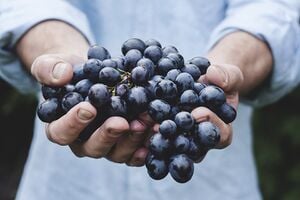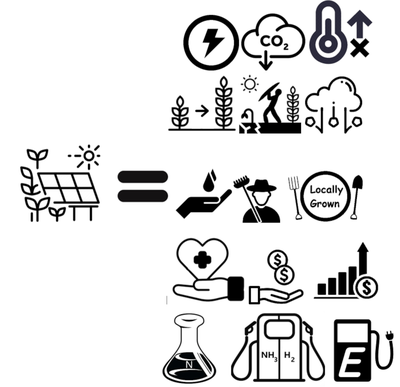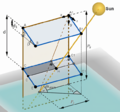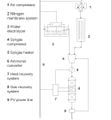
Aggressive growth of land-based solar photovoltaic (PV) farms can create a land use conflict with agricultural production. Fortunately, this issue can be resolved using the concept of agrivoltaics, which is co-development of land area for both solar PV and agriculture. To investigate and quantify PV generation potential, without significantly harming agriculture output, this study explores the viability of agrivoltaic farms deployment on existing grape farms in India. Considering the shade tolerance of grapes, an techno-economicanalysis is run for the installation of PV systems in the area available between the trellises on a grape farm. The electrical energy generation potential is determined per unit area and economic benefits for the cultivators is quantified over a number of design options. The results show the economic value of the grape farms deploying the proposed agrivoltaic systems may increase more than 15 times as compared to conventional farming, while maintaining approximately the same grape production. If this dual use of land is implemented nationwide, it can make a significant impact by generating over 16,000 GWh electricity, which has the potential of meeting the energy demands of more than 15 million people. In addition, grape-based agrivoltaics can be implemented in rural areas to enable village electrification.
Highlights[edit | edit source]
- Agrivoltaic potential of grape farms in India has been assessed.
- Grape farms can be utilized to mount solar photovoltaic systems.
- Agrivoltaic systems increase >15 times income, same grape production.
- India has >16,000 GWh electricity potential.
- 15 million people electrically served by grape-based agrivoltaic systems.
Method[edit | edit source]
Example Commercial[edit | edit source]
See also[edit | edit source]

- Coal with Carbon Capture and Sequestration is not as Land Use Efficient as Solar Photovoltaic Technology for Climate Neutral Electricity Production
- Dual use of land for PV farms and agriculture literature review
- sheep
- Israeli white plastic reflectors
- A Farmer's Guide to Going Solar (NREL)
- German guidelines: https://www.ise.fraunhofer.de/content/dam/ise/en/documents/publications/studies/APV-Guideline.pdf
- 2021 review
- Miskin, C.K., Li, Y., Perna, A., Ellis, R.G., Grubbs, E.K., Bermel, P. and Agrawal, R., 2019. Sustainable co-production of food and solar power to relax land-use constraints. Nature Sustainability, 2(10), pp.972-980.
- Retrofitting solar parks for agrivoltaics
- Shading PV
- Alexis' talk at American Solar Grazing Association2021
In the News[edit source]
- Agrivoltaics: solar energy + better crops Climate and Nature
- Why solar power and farmers’ fields could be the perfect combination TVO
- Solar farms and sheep show the makings of a clean energy classic duo Business Renewables
- Agrivoltaics charge up St. Albert-area farms St Albert Gazette
- Sheep, solar and crops. How some Alberta farms are creating ideal growing conditions Western Wheel
- Sheep, solar and crops. How some Alberta farms create ideal growing conditions Voxpopuli
- Protein bars from recycled plastic bottles? An indoor farm on wheels? Western prof gets innovative with green tech Toronto Star
- 加拿大环保狂人回收塑料瓶制成蛋白棒 还有可移动室内农场!? Lahoo





































